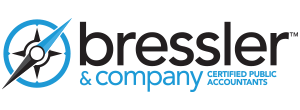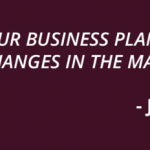Setting Goals and Seizing Opportunities in 2021
Think back to November 2019. What predictions did you make for 2020? Few could have forecast what this year had in store.
Very few businesses have been unaffected by the events of 2020. Some businesses have boomed as a result of increased demand for their products and/or reduced competition. Others have suffered dramatically and are ‘limping along’ with uncertain futures.
Common to all of these businesses is the need to look ahead and set goals. And now is a good time… with 2021 right around the corner. Let’s look at what goal setting in 2021 means for different businesses in these interesting times.
Revenue
Revenue, or top-line growth, is a good starting point for goal setting. Will your business grow, stay the same or get smaller? In buoyant economic periods, many businesses take for granted that they will grow their sales. They may look at last year’s growth rate and apply the same percentage (or an even greater percentage) without much more thought.
COVID Example 1: As a restaurant in a business district, you reinvented your business to offer takeout meals for families and started to specialize in high-quality baked goods. You’ve embraced e-commerce. You feel you’ve unlocked a new market and will never go back to the ‘old ways’. You are predicting revenue growth but the potential is completely unrelated to what was achieved in previous years. You need to completely rethink your business model to arrive at intelligent forecasts.
COVID Example 2: As a travel agent catering to individuals and businesses, you have barely survived 2020. Yet there is some resurgence of domestic leisure travel. You are setting a sales goal which enables you to breakeven in the first quarter of 2021 at which point you’ll make further decisions about the future of your business.
Profit
Business is not just about top-line growth, but how much the owners can distribute as dividends OR the surplus they can use to reinvest into the business for future growth. This incredibly important metric can validate the very existence of a business, since no business can survive protracted periods without profit.
COVID Example 1: As a provider of home improvement services (bathroom and kitchen fit-outs), you’ve seen increased demand as people invest in their primary properties. Many customers are not price-sensitive so profits have been healthy in 2020. But will this continue in 2021? Will your suppliers be able to continue servicing you? Will your part-time laborers continue to be available? These unknowns may affect profitability and a cautious approach is sensible.
COVID Example 2: As a marketing consultant for a few local businesses, you’ve lost two key clients. This forced you to take on some marketing administration work, which provides consistent revenue but profit margins were slashed. You are unlikely to regain your former clients (one has gone out of business), so you have set a profit threshold for the first quarter of 2021. Failure to reach this number and you’ll consider shutting down your business… and seeking employment.
Efficiency
How effectively you use your resources is important. The productivity of your team members and how you use available cash are examples. Perhaps you own a lot of real estate but what returns do you get from these assets? Understanding these numbers and setting goals to improve is important.
COVID Example 1: When COVID hit, many clients of your software business backed off and you released 12 employees (half of your workforce). This restructuring resulted in much greater earnings per employee (productivity) and you are now intent on growing productivity even further in 2021.
COVID Example 2: Your business sells kitchen supplies and you operate a fleet of 14 vehicles used by the sales team. The utilization of these vehicles was cut in half as sales declined. You’ve decided to sell 10 vehicles which will increase utilization of your fleet and the efficient use of this expensive-to-maintain asset.
Lifestyle
Operating businesses is partly about achieving certain financial metrics AND lifestyle goals. It is sensible to be really clear on both kinds of goals.
COVID Example 1: You operate three gyms in the local area. Regulations forced you to stop operating though you offered various services online to retain customers and continue deriving an income. This came at a massive investment of time and you worked long hours. Your goal for 2021 is to limit your work time in the business to 45 hours per week.
COVID Example 2: After retirement, you bought a restaurant in a resort area and were enjoying managing and engaging with your customers. The dramatic reduction in business forced you to release staff members and you are now spending time in the kitchen and on tasks you don’t enjoy. Your goal for the first quarter of 2021 is to resume the role of owner / manager, failing which you may look to sell the business.
Succession
Every business will go through a succession event at some stage. This may mean liquidation, selling the business to a third party, having employees invest in the business, listing the business on a stock exchange among other options. Clarity on what you want to accomplish is critical.
COVID Example 1: You have built a successful supplier of imported chemical products used by manufacturers of cleaning products. For over one year, you were discussing selling the business to a much larger competitor who has indicated they cannot proceed with the transaction in the near future. While disappointing, you have resolved to work at improving your business performance through 2021 and not entertaining any transactions because the valuation you will achieve does not meet your thresholds.
COVID Example 2: You have operated a garden services business for three years but you have not enjoyed the experience. A younger employee is interested in buying the business and can fund the purchase by borrowing from their family. The risks and uncertainty associated with the current business environment have encouraged you to pursue that transaction in early 2021 with a view to fully transitioning the business by the end of the year.
There are examples of GOALS that business owners are setting to give them a clear roadmap for activities in the year ahead. This is a better approach than waiting for things to unfold and hoping for the best. Put in the time and discipline to arrive at a clear set of business (and personal) goals. We are here to help. Give us a call if you would like to discuss. 559.924.1225.





